Residents of Battlement Mesa and Rifle, Colorado, are on the verge of seeing gas companies abandoning their wells and leaving taxpayers to clean up the mess.
This story came from WORC’s Living with Oil and Gas project. Learn more about Living with Oil and Gas here.
Leslie Robinson lives in Rifle, Colorado, a town nestled on the banks of the Colorado River. Dave Devanney lives 20 minutes to the west, downriver, in Battlement Mesa, Colorado. Both Dave and Leslie have witnessed the boom and bust economy of oil shale drilling shape their hometowns, the Valley, the Piceance Basin, and all of Western Colorado over the last few decades. While drilling has driven some neighbors apart, their work to hold the industry accountable has helped build a new community and friendship between the two.
“Drilling for natural gas and oil started in the 1950s and in some places on federal land around here you can still see some remnants of their equipment that they abandoned after the well dried up,” Leslie said.
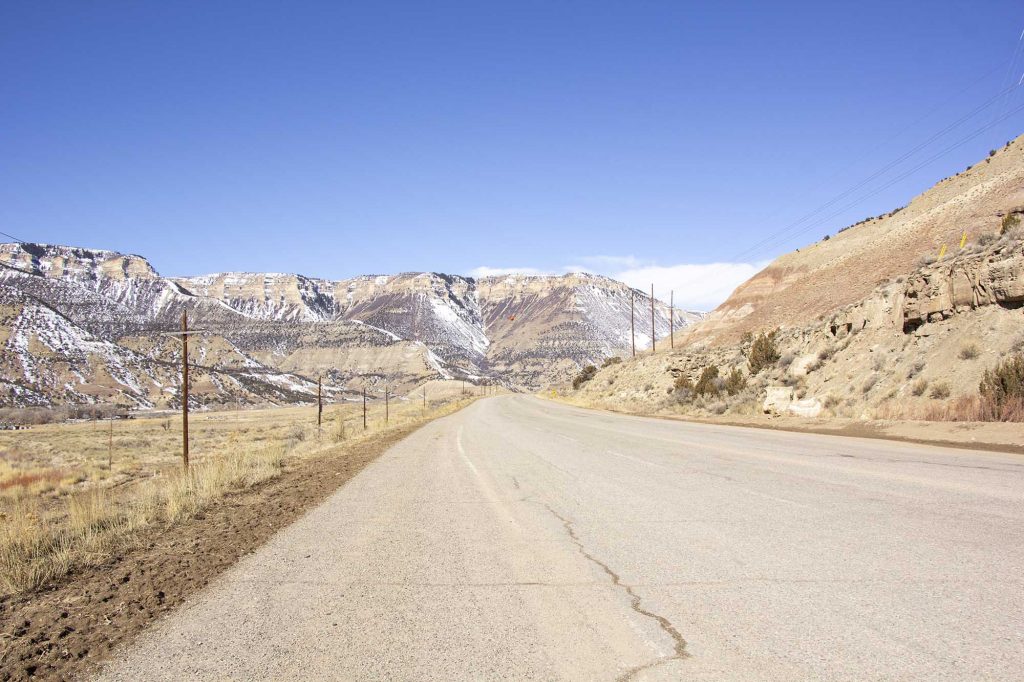
Leslie said much of the drilling in her area has been defined by the geology of Western Colorado. Extraction of oil shale has forced the Western Slope into a boom and bust economy for decades, with infamous busts such as the 1982 Exxon decision to leave becoming locally nicknamed, “Black Sunday.” The advent of fracking technology in the mid 2000’s made tight sands gas extraction economically viable and paved the way for oil and gas expansion throughout the Piceance Basin.
“It wasn’t until fracking became feasible that drilling really took off in this area because we have compact sands, and it takes fracking to split those apart and release the natural gas,” Leslie said.
Leslie said around 2004, fracking technology allowed for drilling in Western Colorado at $16 per million BTUs. The area saw a huge increase in drilling at this time.
“We often joked about if you wanted to see Dick Cheney’s energy policy in action come to Rifle because thousands of acres were leased at one time and we’ve ended up with over 11,000 wells altogether,” Leslie said.
Never miss an opportunity to make the West even better: receive our action alerts.
Leslie said that in a 20-mile journey down I-70, you could count over 50 drilling rigs in various stages of production at the same time. 20 miles west, Dave started feeling the effects of the boom economy within his Planned Unit Development (PUD), a regulatory designation designed to create more intentional residential neighborhoods, in Battlement Mesa.
“Battlement Mesa is a residential community primarily,” Dave said, “when we moved here, there were about 4,000 to 5,000 residents and it was growing.”
By the end of the 1982 bust, more families had moved out of Battlement Mesa and its neighboring town, Parachute, than live in the two towns today. Dave and his wife moved to Battlement Mesa in 2004, right before the fracking boom was starting.
Dave recalled the steady increase in truck traffic in the area. At first, he paid little attention to it.
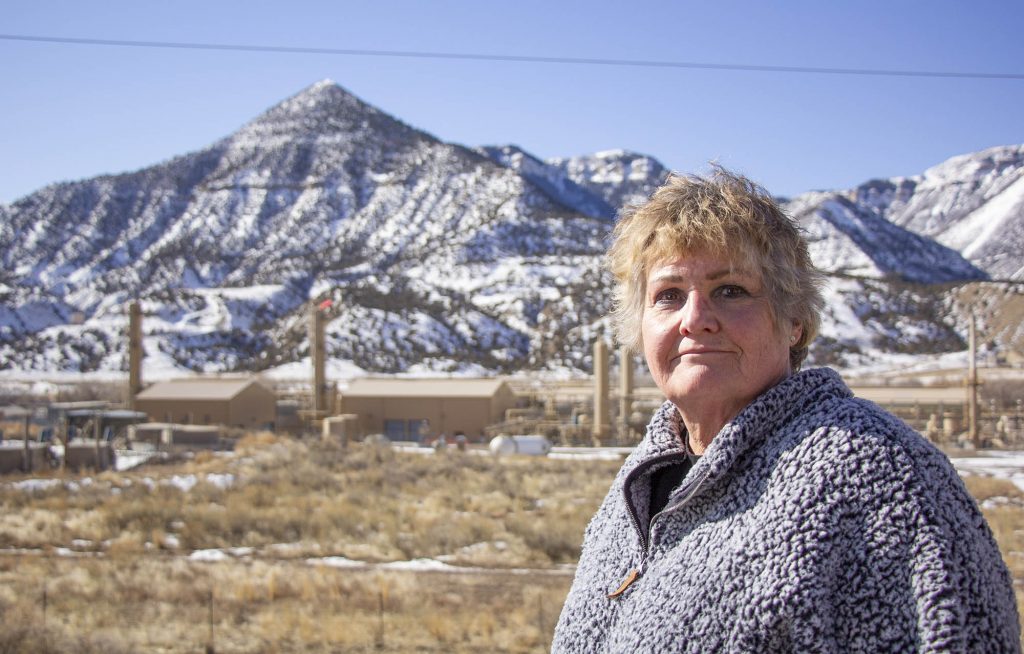
“As it became more evident that as there was growing natural gas development we could see more truck traffic. People started getting nervous and we asked the developer if anybody had to worry about there ever being natural gas drilling in Battlement Mesa. ”
Dave said concerned residents were told somebody drilled a well years ago within Battlement Mesa and it wasn’t economically feasible, so no drilling would happen within the community again.
“In 2009, we heard from the developer that a natural gas company was going to be drilling 200 natural gas wells on 10 well pads inside our community boundary,” Dave said.
Dave and his neighbors feared for their homes, their health, and their way of life.
“That’s when we formed our grassroots group, Battlement Concerned Citizens,” Dave said.
“We started meetings, we met with the regulators from the county, and we requested that a health study be implemented and completed before any drilling began.”
The county approved a Health Impact Assessment (HIA), a defined study to determine impacts of a particular industry on a community. Garfield County hired the Colorado School of Public Health to conduct the study. They looked at the existing research and they did interviews with various government and local entities and determined the impacts of drilling within the PUD.
“The first draft was very alarming for citizens, you know, as well as the industry,” Dave said.
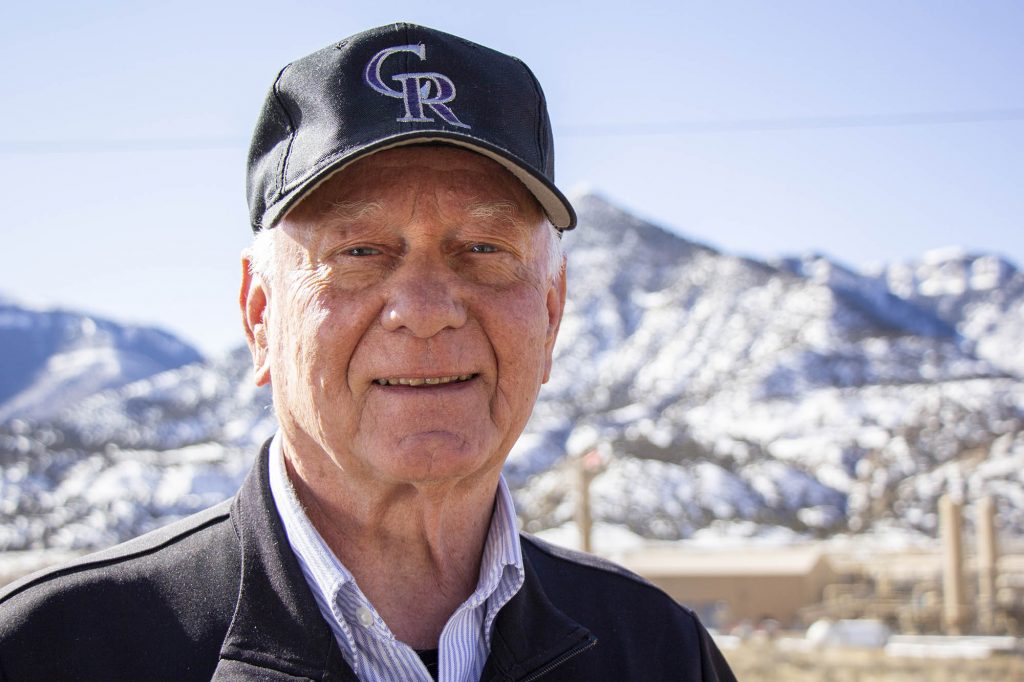
“Of course, the industry and the state tried to start poking holes in this Health Impact Assessment, which was particularly distressing. Ultimately the county withdrew the funding for that study and it was terminated, but fortunately, it still lives because the second draft is memorialized on the Garfield County website and everybody has seen it.”
Dave said the state of New York referenced the Battlement Concerned Citizens Health Impact Assessment when they banned fracking in the state in 2014. Despite the results of the Health Impact Assessment, the county approved the project and the company moved forward with plans to drill.
“Being a citizen activist in the oil and gas field is a full-time job in itself,” Leslie said. “Both Dave and I have, some weeks, spent 60 hours preparing for a hearing you know, calling people to come to this meeting, going down to Denver. We’ve been very passionate about giving voice to the people fighting against oil and gas, which can spend millions of dollars against us,” Leslie said.
“Phase One in the development in Battlement Mesa was two well pads and a two and a half mile pipeline,” Dave said. “One of the things you know that sometimes gets lost in the conversation is the pipelines that are buried underground carrying natural gas.”
“Prices today are hovering less than $2 per million BTU’s and as one driller explained it to me the other day, every producer in this area is one step ahead of bankruptcy. So we’ve gone through a boom and bust all within 20 years,” Leslie said.
“They were building a pipeline 25 feet away from people’s backyards,” Leslie said.
Dave said he sees pipelines as ticking time bombs.
“There’s hardly a week goes by when you don’t see a news story about some explosion somewhere that destroys communities,” Dave said.
Despite all of the concerns from citizens and the community, Phase One of the Battlement Mesa drilling project went through the regulatory process and the county approved the development. Even before drilling started, impacts to air and water quality in the area were inevitable. Noise pollution, truck traffic, and an increase in heavy machinery driving through the neighborhood started to change the makeup of the community. The social impacts of an energy boom shortly followed.
“The drilling definitely affected our air and water quality. We had thousands of workers here so we had social impacts, it was impossible to find a place to live, we had man camps on the federal properties, and it was definitely boom time around the Rifle and Battlement Mesa area,” Leslie said.
“The Health Assessment we had done said that there would be increased negative impacts for anybody residing within a half a mile of a facility,” Dave said.
Currently in Colorado, drilling operations are only set back 500 feet in a residential area from occupied dwellings.
“In a boom, hundreds of people move in here and kind of take over the community,” Dave said. “We had lots of oil and gas workers living in our apartment complex.”
Dave said before the boom the complex was predominantly fixed-income elderly folks and retired people.
“When the boom happened the rent went up, and so every six months the rent was going up and as a consequence, a lot of the fixed income people had to leave, and so oil gas workers came in and occupied those apartments,” Dave said.
Additionally, local projects like street repair were stalled because the majority of labor was working in oil and gas.
“A lot of local work disappeared,” Dave said.
The social impacts of a boom also disrupt the relationships between community members.
“The impact also divides the citizens,” Dave said. “Citizens like us that are retired and want a clean, healthy, environment to live in, we’re upset but the people that are making the 20 bucks an hour, they’re happy with it and they’re pissed off at us. So now you got two different camps. Now you got the us-and-them and in some circles, people like Leslie and I aren’t real popular.”
The price of gas has steadily declined since the boom began in the 2000’s, and with it, production on the Western Slope.
“Prices today are hovering less than $2 per million BTU’s and as one driller explained it to me the other day, every producer in this area is one step ahead of bankruptcy. So we’ve gone through a boom and bust all within 20 years,” Leslie said.
When the inevitable bust comes, the divides in the social fabric are still there, along with the lasting impacts to air and water quality and human health.
“The oil and gas companies pretty much moonscape their pads so there’s nothing to burn should a wildfire go through their pad up in the federal area so it does not allow for any grazing of wildlife at all. The truck activity to the sites disrupt breeding and birthing time so the wildlife and our deer herds are being decimated. We locals are just shaking our heads. Streams are going to be polluted too,” Leslie said.
Boom and bust is the nature of extractive economies. When money is thrown into that equation, the outsized pressure industry has can dictate the fate of entire communities.
“The more you get into this realm, the more you find out about this industry, the scarier it gets. We’ve seen how the game is played,” Dave said. “Another well pad that they’re putting inside the community was going to be less than 1000 feet from a church. At the time, the church had a daycare center so they were going to have to get a waiver or do something to deal with this problem with the church. Ultimately, what they did was take the wellhead and just swivel it a little bit, change the location slightly so that now it’s slightly over 1000 feet. That’s how industry solves environmental issues.”
“People are just really tired of the busts and booms that energy development brings,” Leslie said.
The people of Western Colorado have witnessed first hand why it’s important to have stronger state and federal regulations on oil and gas.
“We need those safety nets for when the bust happens because it invariably follows boom,” Leslie said.
When busts happen, they often leave behind orphaned wells.
“There’s a problem on federal land of abandoned wells. And now that the prices are marginal, that means family-owned or small corporate-owned companies will run away and leave wells behind. The Colorado State inspectors have told me that their BLM counterparts are saying the state can clean up the orphan wells because the feds don’t have enough money to do that. The Colorado taxpayer is held responsible if we want to have these abandoned orphan wells plugged, we’re going to have to pay for it. The state is going to have to go in and plug those wells,” Leslie said.
The Colorado taxpayer is held responsible if we want to have these abandoned orphan wells plugged, we’re going to have to pay for it. The state is going to have to go in and plug those wells,” Leslie said.
In April 2019, Senate Bill 181 passed. The bill, “Protect Public Welfare Oil And Gas Operations,” was intended to provide additional public welfare protections regarding oil and gas operations and change the mission of Colorado’s regulatory agency from a mandate to “foster development,” to one which prioritized public health and environmental safety. A Democratic Governor and Democratic-controlled Senate and House, paired with increased oil and gas development on the Front Range (near metropolitan areas like Denver and Boulder) encouraged lawmakers to reassess how the industry controls the state.
“With the Democratic trifecta in Denver, it was convenient and the time to change oil and gas regulations and make them stronger across the state. We’ve been dealing with impacts of oil and gas since the 80s, but the Front Range (Denver metro area) was totally unprepared with residential drilling. There are communities like Broomfield and Boulder with million-dollar homes and all of a sudden there’s a pad across the street because it’s in a different county and that particular county likes oil and gas. And so there’s been a lot of confrontation going on between the industry and communities on the Front Range.”
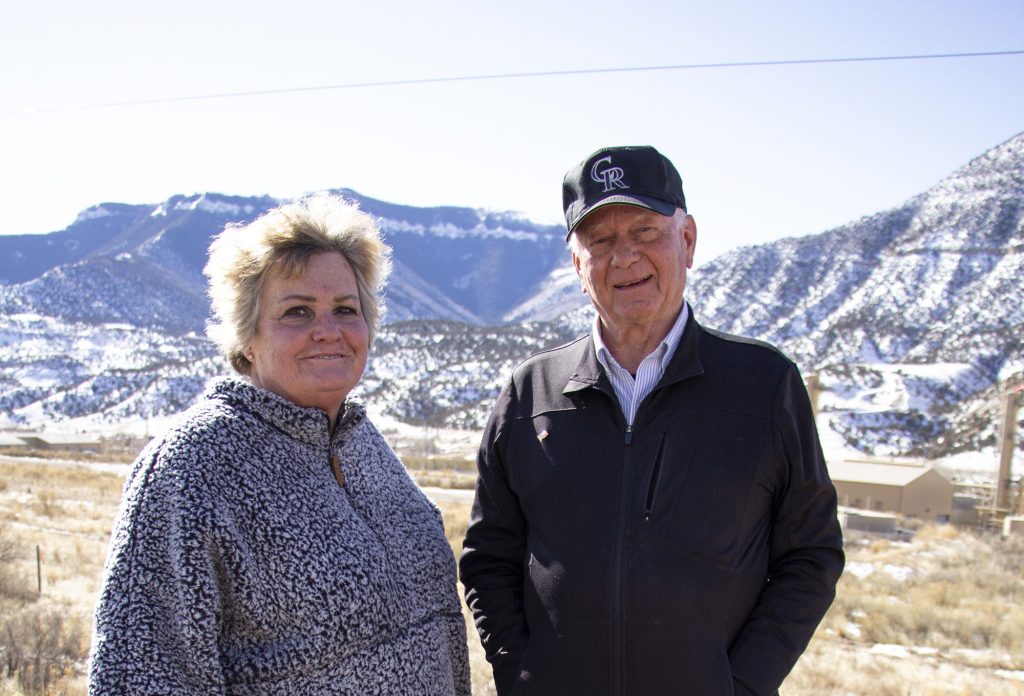
“The basic mission of the Colorado Oil and Gas Conservation Commission was to foster the development of oil and gas, but with SB181 their new mission is to develop oil and gas if it does not harm public health, safety, and the environment. So that’s been the major impact and all the rules are going to flow from that mission change,” Dave said.
For the first time since oil and gas development in Western Colorado ramped up in 2004, Dave and Leslie are hopeful.
“We’re very encouraged by the passage of Senate Bill 181 in Colorado and I think that has already shown great promise,” Dave said.
Leslie said there’s a huge push for legislators to pass stronger legislation and to “beef up” the Colorado Oil and Gas Conservation Commission.
“We’re hopeful this will result in preserving our clean air, our clean water and that the industry will have greater setbacks that they’ll have to acknowledge in order to drill underneath residential areas. It gives the oil and gas commission the opportunity to say no to bad oil and gas proposals,” Leslie said.
Through this process, Dave’s new mantra regarding residential drilling became a modified NIMBY: “Not in my back yard, not in your back yard, not in anybody’s back yard.”
Learn more:
EPA’s Methane Standard Rollbacks Threaten Communities’ Clean Air and Health
It’s Time to Call Out Oil and Gas Companies’ Dishonesty on Methane Reductions
WORC Groups Take the Trump Administration to Court Over Gutting BLM Methane Rule
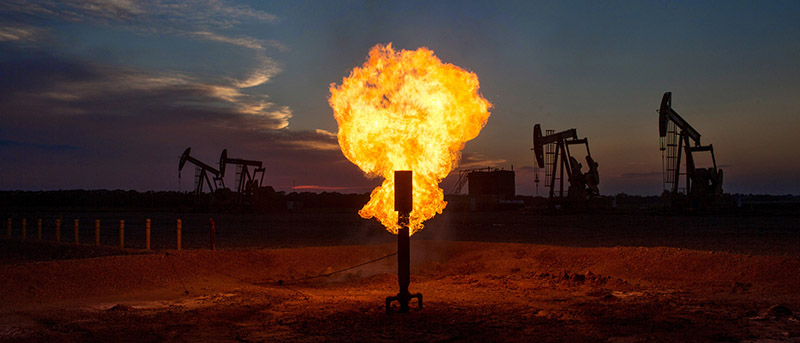
Help create a healthy and sustainable West. Support WORC today.
